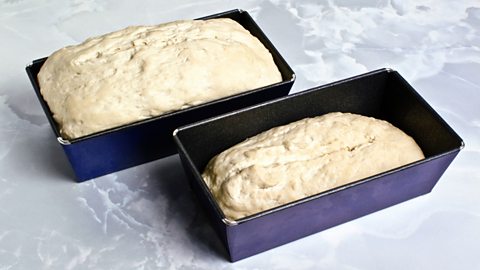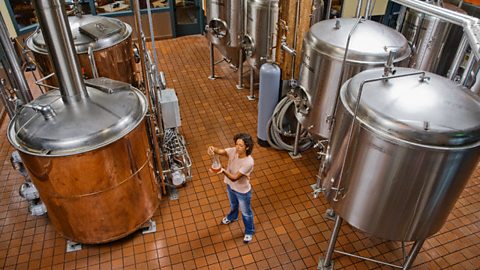Commercial uses
Microorganisms can be used by humans to produce foods and other useful substances. They are suitable for this role because they grow rapidly, may have simple nutrient requirements and can produce a wide range of products.
Using yeast to make bread and beer
Yeast is a single celled, microscopic fungus that uses sugar as food. In bread making, the carbon dioxide produced by the yeast during respiration is trapped in the dough, causing it to rise.
You can see a significant rise once the dough has been baked.

In brewing, carbon dioxideA gaseous compound of carbon and oxygen, which is a by-product of respiration, and which is needed by plants for photosynthesis. and ethanol (alcohol) are produced by the yeast during fermentationA term for respiration in the absence of oxygen. (respirationThe chemical change that takes place inside living cells, which uses glucose and oxygen to release the energy that organisms need to live. Carbon dioxide is a by-product of respiration. without oxygen).
Beer contains alcohol and the carbon dioxide gives the beer its characteristic fizz.
Commercial brewers make sure that beer production is as efficient as possible by providing the best possible conditions for yeast to grow and ferment. For this to happen, the following factors must be carefully controlled:
- temperature
- oxygen supply
- amount of glucose
- unwanted microorganisms must be kept out

The easiest way to make sure that this happens throughout the fermentation is to set up all the conditions at the start, together with the raw materials and then to leave the whole system closed and untouched until the fermentation is complete. This has the disadvantage that production is only possible in batches rather than by a continuous process. A production process like this is called batch processing.